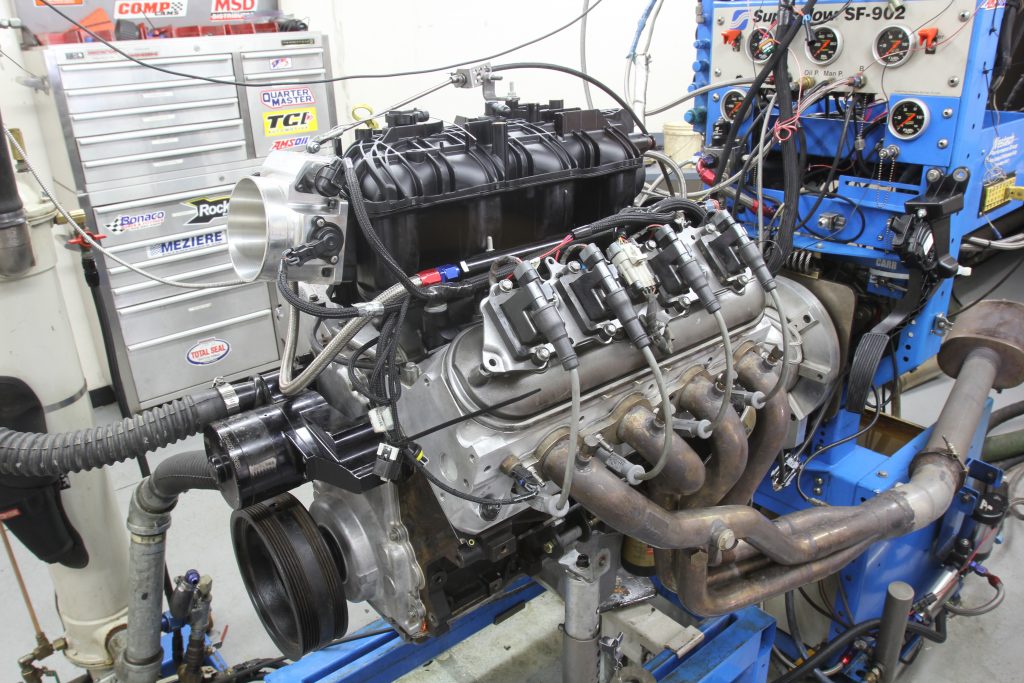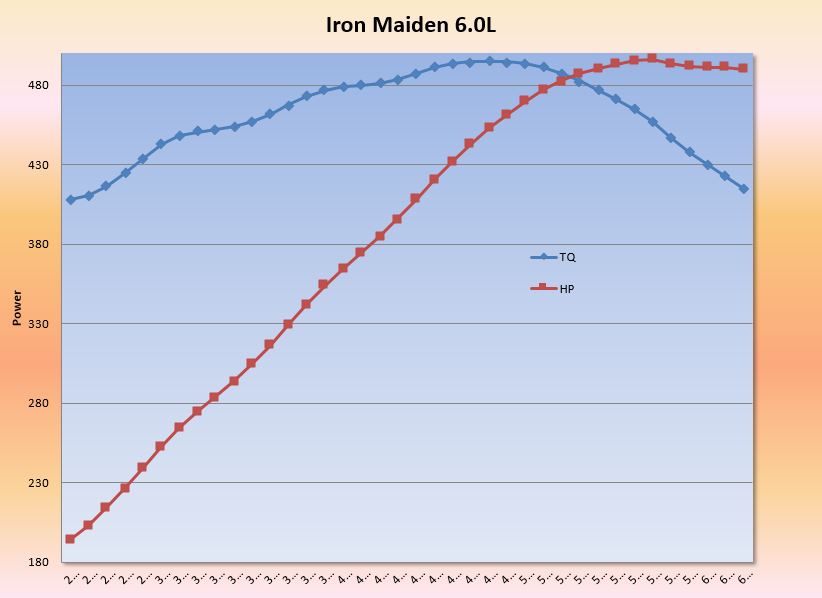I’ve followed your stories and career for years. I know the internet has changed most everything we do but I miss seeing Car Craft in print. One tech question I have is in your series of articles on the building of “The Iron Maiden”, do you have any info on a little less aggressive cam like one of Summit Racing’s LS series cams?
I want to get more torque and power in my truck, a completely stock ‘06 Sierra 1500 HD 6.0 Crew Cab, 4L80E 4×4 with 3.42:1 gears.
If the Comp cam (with that much lift) is still streetable that sounds great. My concern is, would there be enough low end increase for towing and hauling? I do have to be concerned with emissions as well, since that is a requirement here. That was part of my reasoning for the Summit Racing cam. I do have a brand new TBSS intake that will go on at the time of the cam swap as well.
D.P.
The Car Craft Iron Maiden story you refer to was a series I wrote for the magazine about three years ago. We started with an iron block 6.0L and went through a long series of different upgrade conversions where we never touched the rotating assembly, using the stock pistons, used rings, and cylinder walls. This engine eventually made 550 hp using a set of Trick Flow cathedral port heads and a 227 at 0.050 Comp hydraulic roller cam.
However, my favorite version of that series was less dramatic but made outstanding power. We bolted on a set of pocket ported 5.3L heads that were modified by West Coast Racing Cylinder Heads. These heads were combined with a small Comp Xtreme Energy 219 at 0.050″ camshaft and a factory Chevy Trailblazer SS intake manifold. Controlled by a Holley HP ECU, we made 496 hp and 495 lb-ft of torque at 4,800 rpm. This also pulled down 410 lb-ft of torque at 2,600 rpm and idled nearly like a stocker.
You may wonder why we would use a set of smaller, 5.3L heads on our 6.0L. The answer is that the 5.3L heads use a smaller combustion chamber. The stock 6.0L cathedral port heads use a 70cc chamber. The stock 5.3L heads are significantly smaller at 61cc. Just this change alone will pump the compression from the stock 9.5:1 to increase almost exactly one full point to 10.5:1. This alone is worth the swap. West Coast Racing adds a larger 2.00-inch intake valve and performs some minor CNC porting that adds airflow. Swapping to these stock heads is worth 10 to 12 horsepower. Adding the West Coast heads on our test was worth a solid 20 lb-ft of torque at the peak and 25 hp over the stock 6.0L heads.
Making power is all about combinations and this just happened to stumble onto a really good mix of parts. We certainly made more torque at lower speeds with other combinations and we also made another 50 hp more with a bigger cam, better intake, and better heads. But I really liked this combination of the shorter cam as it would be an outstanding package for a LS engine conversion in a street car that would see lots of highway and street miles. Granted, that Trailblazer SS intake manifold is not the prettiest piece but if we changed to a Camaro or Corvette LS6/LS2 intake, the torque would suffer. In fact, we did that test and the LS6 intake was consistently short in torque and horsepower throughout the entire rpm range from 3,000 to 6,000 rpm. In a truck, no one would care, but in a car, people often become enamored with appearances over function. That’s not wrong, just an observation on car building.
Given that your combo is in a big, heavy 4×4, I would step the cam down to the Summit Racing version of this Comp cam—the XFI Xtreme Truck with 206/212 at 0.050 with 0.513/0.520-inch lift and a 115 degree lobe separation angle. This shorter duration will add torque down low while sacrificing a small amount of peak horsepower potential.
I looked up the Summit Racing cams and it appears they offer a Pro LS Vortec Truck Swap Cam with 209/217 with 0.550 lift on both intake and exhaust with a 112 LSA. That would be close—it will have a little lower idle vacuum because of the tighter LSA but will offer slightly more mid-range torque as a benefit. The additional 5 degrees of exhaust duration will extend peak power. This means it will have roughly 2.5 degrees earlier opening and closing points compared to the Comp cam. This adds a degree or so of overlap in addition to the tighter LSA. A narrower LSA improves mid-range torque but also lowers idle quality. Since the stock LS engines all have incredibly wide LSA angles (usually around 116 to 120 degrees) a tighter LSA isn’t all that bad and it should still idle with around 14 inches of idle vacuum. You may detect a very slight variation in idle speed but it will be slight.
I think this would be a good cam selection for a daily-driven 4×4 truck and I’d replace the timing set as part of the conversion since it’ll likely be loose. This should be a good upgrade even with the addition of the Trailblazer SS intake. That should be worth 20 lb-ft of torque or so in the middle which you should feel in the seat of your pants!
One note of concern is that none of these camshafts are sold as emissions legal cams. Technically, they are not legal to use but frankly this small change in cam timing will not significantly alter the emissions of the engine when it is fully up to temperature.
Another point for readers with similar but perhaps newer engines is that when VVT (variable valve timing) appeared and was later followed by AFM (which is Active Fuel Management, when the engine deletes four cylinders under light load) both of these packages drastically affect cam timing changes. VVT is a good thing as it enhances low-speed torque by advancing the cam and then retarding it as rpm increases. However, when adding a longer duration cam, you can run into issues with piston-to-valve contact with stock VVT.
The best solution is to use a cam that is compatible with VVT as eliminating VVT will only lower torque which really is counter-productive. There will be some conversion issues with converting to the TBSS intake compared to your stocker, so be prepared for some minor changes and you will need to find a later fuel rail to adapt that to your existing fuel delivery system. Hope this helps.



[…] I’ve followed your stories and career for years. I know the internet has changed most everything we do but I miss seeing Car Craft in print. One tech question I […] Read full article at http://www.onallcylinders.com […]
Hello,
I am currently in the process of building a new 6.0 liter LS engine for my 31′ Winnebago Motorhome. I find your article very useful, I wanted to know if I purchase pistons with higher compression and use stock heads with porting would give same result in HP increase as using stock piston with smaller combustion chamber? Also you recommend changing timing set? Could you give some additional details on this?
Are you for hire? I would be willing to pay you to find the correct parts needed to build a nice engine that makes power for pulling this 14,000 GVW rig. I am wanting to use stock fuel injectors, but do have an HP tuner to change fuel and timing curves. I am also looking at buying new LS engine block (Chevrolet Performance LQ4/LQ9 6.0L Gen III Cast-Iron Bare Engine Block) and starting from there. Please advise, I am willing to pay you for locating parts needed, heads, rods, pistons, rings, etc.
Thanks
Hello I have an iron 6.0 bottom end and I’m looking to install lunati voodoo roller .584/ 584 113/109 lsa and a set of worked 799 heads and wanted to know if this was a good combo
I think that your combo will work great. I have almost the exact same setup. I have 799 worked heads on my lq4 with a BTR cam .550 lift and 112° separation and it works great! I don’t think you’ll have any issues at all. You might need a higher stall converter but other than that it’ll run good.